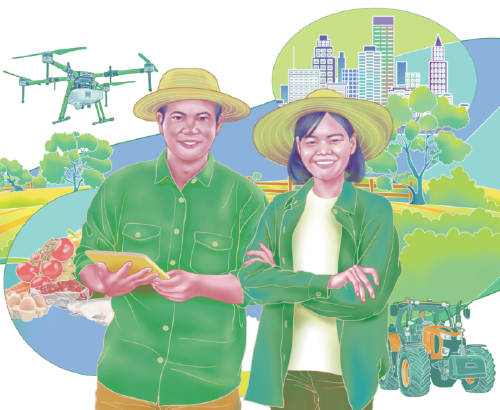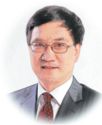Required transformations
Policies to narrow the rural-urban income gap are key to common prosperity

Policies to narrow the rural-urban income gap are key to common prosperity

Editor's note: The world has undergone many changes and shocks in recent years. Enhanced dialogue between scholars from China and overseas is needed to build mutual understanding on many problems the world faces. For this purpose, the China Watch Institute of China Daily and the National Institute for Global Strategy, Chinese Academy of Social Sciences, jointly present this special column: The Global Strategy Dialogue, in which experts from China and abroad will offer insightful views, analysis and fresh perspectives on long-term strategic issues of global importance.
Over the past four decades, China's rural economy has experienced rapid transformation, including the rapid growth of high-value agriculture (vegetables, fruit, livestock, fisheries, etc.) and the continued expansion of rural labor's non-farm employment, which has greatly increased the income of rural residents. However, while per capita rural income has been increasing, the income gap between urban and rural residents is still big and widening. Ensuring faster income growth for farmers is the key to achieving common prosperity. However, there are many challenges that have to be overcome to increase the income of farmers.
First, farmers are facing new challenge in expanding the development of high-value agriculture (e.g., vegetables, fruits, livestock, fishery, etc.), and the rural economic transformation in agriculture has recently slowed down. In addition to the market risks, farmers face policy restrictions on the development of high-value agriculture. In November 2020, the central government issued a guideline on preventing non-grain use of the officially designated basic farmland, with the aim of ensuring grain security. In 2022, the No 1 Central Document of the Chinese government further proposed that the basic farmland should mainly be used for producing grains and other agricultural products such as cotton, oil, sugar, vegetables and forage and feed. However, some local governments have implemented the above policies by adopting a one-size-fits-all approach, allowing basic farmland to only be used for growing grains, which limits farmers' incomes, particular the income of farmers with small-scale farms.
Second, amid the sluggish recovery of the global economy, the downward pressure on the economy is mounting and the growth of rural labor's non-farm employment has slowed down. Based on a survey of migrant workers released by the National Bureau of Statistics, the total number of migrant workers declined by 5.17 million, or 1.8 percent year-on-year in 2020 to 285.6 million. Under the impact of the COVID-19 pandemic, the proportion of migrant workers in manufacturing, engineering, and accommodation and catering industries in 2020 stood at 27.3 percent, 18.3 percent and 6.5 percent, respectively, down 0.4, 0.1 and 0.4 percentage points from 2019. While the share of agricultural employment has decreased over time, it rose in 2022, up from 22.9 percent in 2021 to 24.1 percent, which could have a negative impact on farmers' income from non-farm activities.
Third, in the past several decades, even as the Chinese economy maintained a high growth rate, which has created hundreds of millions of employment in industry and service sectors for rural labor, there has been a large surplus labor force in rural China. Now, many industries are seeking to enhance their overall productivity by means of automation, which will bring great challenges to increasing the non-farm employment of rural labor and a reduction of the agricultural labor force. Along with the boom in the use of industrial automation, the unemployment pressure will mount. Increasing employment for the rural labor forces in non-farm sectors will be an arduous task for the Chinese government in the next three decades.
In light of this, related policies should be put forward to promote rural economic transformation and raise the income of farmers.
First, policies should be implemented to accelerate urbanization and industrialization to create more jobs for the rural labor force, which will narrow the rural and urban income gap. Access to large, medium and small cities should be eased for the rural labor force, the people-oriented new urbanization should be accelerated, and rural residents who work and settle in cities should be granted the identity of urban residents. Rural urbanization needs to be promoted in counties, so as to offer the rural labor force more entrepreneurship and non-farm employment opportunities to widen their income channels.
Second, to achieve common prosperity among farmers, China's crop production should move toward the "20-80 production pattern" through the setting up of two separate policy support systems for large and small-scale farms respectively. The large-scale farms that account for 20 percent of farms should produce grain and other bulk agricultural commodities to ensure the nation's grain security and leverage investment by the government to maximize the income derived from their relatively large production scale. The income of small-scale farms that account for 80 percent of farms should be increased through the development of high-value and therefore higher profit agriculture, with aid of policy support aimed at developing production and marketing cooperatives, improving customized production services, reducing the market risks, and promoting smart-agriculture and marketing (e.g., e-commerce and gaining more from added-value chains).
To summarize, the government should accelerate urbanization to facilitate the structural employment transformation from agriculture to the industrial and service sectors by creating a favorable environment for enhancing the rural labor's employment in non-farm sectors, so that the income gap between rural and urban residents can be narrowed. Within the agricultural sector, after ensuring absolute food (particularly rice and wheat) security and largely achieving self-sufficiency in other cereals, the government needs to accelerate rural economic transformation through the development of high-value agriculture, so that farmers can enjoy common prosperity.


The author is director of the New Rural Development Institute and honorary director of the China Center for Agricultural Policy at Peking University. The author contributed this article to China Watch, a think tank powered by China Daily.
Contact the editor at editor@chinawatch.cn































